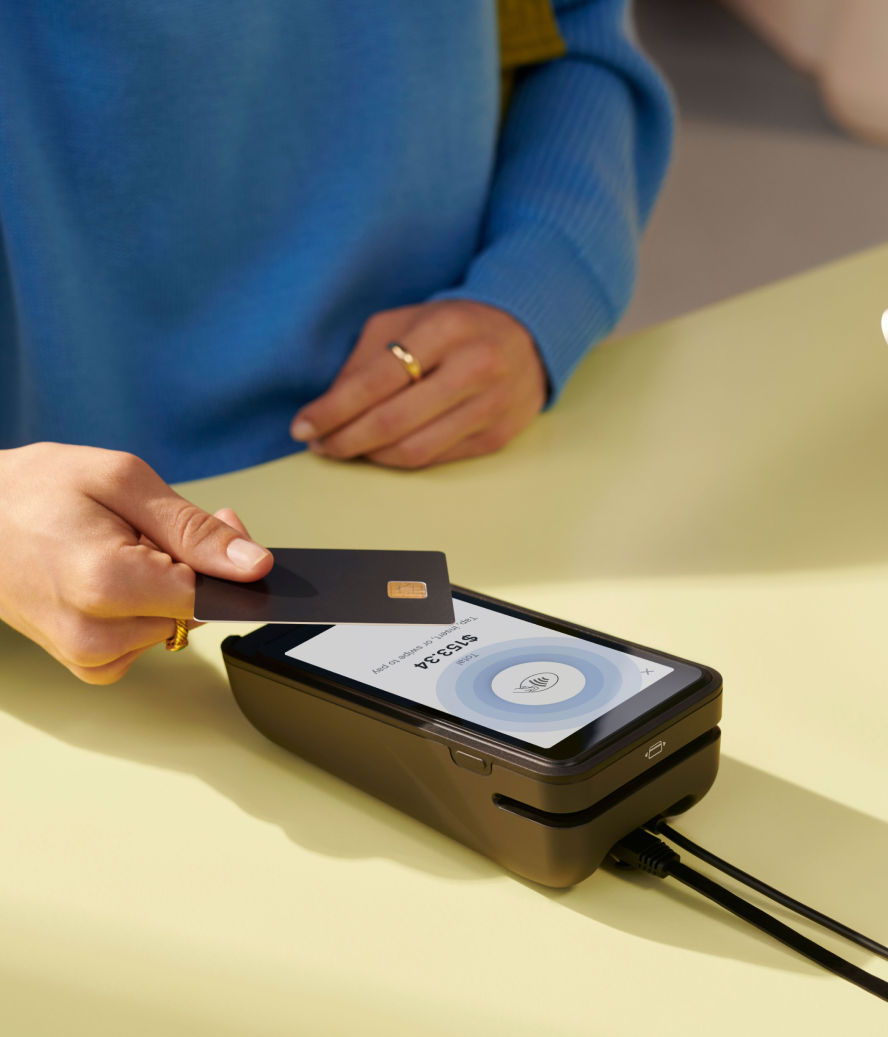As a store’s face, eyes, and ears, the cashier is one of the most important positions in a retail setting. They’re the people customers interact with when they’re comparing products or paying for an order at the checkout counter. Such high table stakes present the need for a comprehensive training program.
The issue most retailers face, however, is the time it takes to train staff. There’s also risk during the initiation stage: Any mistakes cashiers make while learning to navigate your point-of-sale (POS) system can cause inaccurate inventory counts and financial reports.
This guide shares a retail cashier training program to drive sales and create a memorable customer experience that keeps shoppers coming back for more.
What does a retail cashier do?
A cashier works at a retail store and is the person who helps customers with their purchases. They may be responsible for taking customer payments, processing refunds, and helping customers find what they are looking for.
The importance of cashier training
With proper training, cashiers can make sure customers have a great time shopping, impact sales, and improve transaction accuracy.
Improve the customer experience
Cashiers are often the first and last point of contact that customers have with a store, so they play an important role in ensuring shoppers have a positive experience. That’s why it’s important for a cashier to be welcoming and helpful, and to provide excellent customer service.
When a cashier receives ample training, they’re prepared to leave a good impression on shoppers, help them find what they’re looking for, recommend products, and complete checkout.
Boost operational efficiency
Queues can quickly rack up when an untrained cashier doesn’t know how to operate your POS system. Yet when you switch to a POS system that’s easy to use and staff feel confident navigating the software, you can boost operational efficiency and serve more customers faster.
Pet food retailer Tomlinson’s experienced this first-hand when migrating to Shopify POS. Unified data from all sales channels meant staff only had to be trained on a single operating system.
That, coupled with integrations with loyalty and trade membership programs, allowed Tomlinson’s to reduce POS training time for new hires by 32%. It also reduced the average number of taps at checkout by 46%, resulting in a 56% reduction in in-store checkout times.
Improve transaction accuracy
When a cashier is well-trained, they know how to use your shop’s POS and are familiar with pricing, promotions, and store policies. Comprehensive training also ensures that customers pay the right amount at checkout.
An untrained cashier may overcharge or offer unauthorized discounts, which can create headaches and more work for managers, or even revenue loss. You can also consider integrating a customer facing display into your POS to reduce transactional errors.
Bolster security
Cashiers have access to POS data, including customer credit card numbers, which you’re legally obligated to protect. Lack of training might mean that your cashiers accidentally let this information fall into the wrong hands.
Plus, because cashiers have access to the cash register, comprehensive training keeps your money safe. Teach them how to count cash accurately, recognize counterfeit bills, and lock registers when they’re not in use.
💡Pro tip: Bolster POS security by creating user profiles in Shopify POS. Each user can have PIN-protected access and customized permissions (like only exchanging products with manager approval).

Increase sales
When a cashier is familiar with products, promotions, and their customers’ preferences and needs, they can make personalized recommendations and sell more. A thorough cashier training program teaches store associates to upsell and cross-sell subtly yet effectively, helping increase purchase size.
What to train cashiers on
Cashiers are unique in the sense that they power your POS system, talk to customers, and process payments. Here’s what a comprehensive training program includes:
- Cash handling. Cashiers handle cash transactions, so basic math and financial skills are a must. They must be able to count how much cash they are given and correctly give the right change back. It’s their responsibility to make sure the right amount of cash is in the cash drawers at all times.
- Security and fraud prevention. Cashiers will be handling cash and sensitive data on your POS system. Train them on how to detect theft, identify scams, and comply with security procedures.
- Inventory management. Teach cashiers on how to conduct stock checks, reference inventory levels, and offer alternative fulfillment options like ship-to-customer. This also applies to any hardware you’re using to track inventory, such as barcode scanners or RFID tags.
- Returns, refunds, and exchanges. Walk cashiers through how to process a return, from verifying their purchase to initiating a refund. A unified operating system like Shopify merges your data from any sales channel, so cashiers can issue refunds for online purchases in-store (and vice versa).
- Customer service skills. A positive first impression by a cashier can make or break a customer’s experience with a store. As the face of the business, cashiers need to be able to create a welcoming environment for all guests. They need to help shoppers while being professional, courteous, friendly, and kind.
- Discounts and promotions. Whether it’s free local delivery or 10% off for first-time customers, discounts lure customers in. Teach cashiers how to apply these discounts. Even better: Choose a POS system that does it automatically. Tomlinson’s Kate Knecht says this Shopify feature “saves our team a lot of time and energy.”
- Retail clienteling. The best POS systems unify customer data to personalize the shopping experience. Walk through how cashiers can reference this data at checkout to benefit from orders up to 20% larger in nature.
- Upselling and cross-selling. Set cashiers up for success by giving them the tools they need to cross-sell and upsell effectively. Examine POS reports to see which items are usually bought together so cashiers can know what to suggest. You might, for example, encourage clothing store cashiers to recommend complementary low value items at checkout to increase basket size.
- Basic troubleshooting. Whether you lose internet connection or the system freezes, educate cashiers on how to troubleshoot basic problems with your POS system. Most providers have support documentation, including videos, to signpost cashiers to.
How to train retail cashiers
New hires should receive cashier training as part of their onboarding experience. There are a few key steps you can take to build a successful cash register training program.
1. Choose the right training materials
There are many different types of cashier training tools and materials, so it’s important to choose the right ones for your needs. Some of the most popular options include video tutorials, manuals, and online courses—many of which you don’t have to create from scratch. Take advantage of resources from your tech providers and vendors, such as onboarding documents, training videos, and demos.
2. Plan and schedule regular training sessions
Beyond training cashiers at the beginning of their time at your store, you should also build opportunities for continued education further into their tenures. Doing so can help cashiers maintain and upgrade their retail skills.
Change can be hard. When you need to introduce or change internal processes, add new things gradually with training and a transition period to avoid confusing and overwhelming staff.
3. Highlight key store policies
Go over key store policies during cashier training. Review customer-facing policies, such as return policies, discounts, and shipping. Also highlight internal policies, such as how to clock into a shift, how to count stock, who to go to for help, and how to request time off. Consider putting your policies in an employee handbook for easy access.
4. Emphasize customer service
It’s critical to emphasize customer service when training for this guest-facing role. During training, share any values your business has that will impact how cashiers behave. Be clear about what is and is not acceptable behavior, and be consistent in your expectations.
It’s especially important to train cashiers on how to handle difficult or angry customers. If a customer becomes disruptive, cashiers should know how to handle the situation without escalating it. They should remain calm and polite, and be able to explain the rules of the store in a clear and concise manner.
5. Build for scalability
In an ideal world, you’d train each new cashier one on one and in person. However, due to limited resources, you need to build a cashier training program that’s scalable. Use a variety of training tools and media so staff can do some self-guided learning.
For example, you may host an in-person orientation and training at the start of the month for new hires, and then move to self-guided online training via courses, videos, and manuals. Then, cashiers can put what they’ve learned into practice through shadowing.
The beauty of Shopify is that it’s unified, so you only ever have to train staff on one system. And because it supports multiple stores, you can roll out the same cashier training program for every new starter, in every store.
Cashier training tips
Choose a POS for unified commerce
An easy-to-use POS system makes training easier by empowering trainees to resolve their own problems. While this might seem like just a training consideration, it actually points to a deeper truth about modern retail: switching POS systems impacts far more than just ease of use. Traditional fragmented systems create hidden costs and complexity that affect everything from staff training to daily operations.
A unified commerce platform like Shopify POS reduces these pain points by providing a single, cohesive system for all retail operations. Instead of managing multiple systems with different interfaces and training requirements, your staff works with one intuitive platform that handles everything from inventory to customer data.
Recent research validates this approach: Shopify's implementation and integration costs are 11% lower than competitors, while its intuitive interface reduces staff training and onboarding costs by 21% per retail location. This translates to faster onboarding, reduced training time, and employees who can focus on what matters most—serving customers.

Set the cashier’s profile to training mode
Training mode allows your cashiers to interact with the POS system without mistakes impacting your data. For example, if they accidentally void a transaction, apply the wrong discount, or add the wrong product to the cart, your inventory counts and financial reports won’t be affected.
Encourage shadowing from experienced cashiers
Shadowing helps build confidence. Think of it as training wheels before new hires begin working on their own. It can help new team mates learn how to handle specific situations—like unhappy customers, processing a return, or troubleshooting the POS system—without the pressure of operating solo.
Create open lines of communication
Clear communication promotes a successful workplace. Explain contact methods and expectations for your new hires. Create a buddy and shadow system so incoming cashiers know who to go to when they need help.
You could also create resources with FAQs or a group chat or Slack where employees can troubleshoot. This welcoming workplace culture where employees feel comfortable providing feedback can help the business grow.
Introduce new processes incrementally
Change can be hard. When you need to introduce or change internal processes, add new things gradually with training and a transition period to avoid confusing and overwhelming staff.
Improve the retail experience with cashier training
Cashiers are one of the most important roles in a retail setting. They’re the face of your business, which means they can impact sales and the customer experience. With a thoughtful cashier training program, your employees can increase revenue and keep shoppers coming back for more.
Read more
- Stuck in a Rut? 5 Reasons Retailers Should Consider a Business Coach
- Maintaining the Hustle: How to Stay Motivated as a Busy In-Person Seller
- Project Management vs. Product Management: What's the Difference and How Both Can Help Retailers
- How To Be More Productive: 10 Hacks For Time-Strapped Retailers
- Avoiding Analysis Paralysis: How to Prioritize in Your Retail Business
- 10 Quotes to Inspire Entrepreneurs on Their Retail Journey
- Retail Operations: What They Are & How to Overcome Common Challenges
- Preventing Burnout: 10 Ways to Stay Productive Without Getting Overwhelmed
- How to Complete a Retail Store Audit Efficiently (5 Steps)
Retail cashier training FAQ
What training is needed for a cashier?
Cashiers need to be trained on how to operate a POS system (including any integrated hardware), customer service, store policies, exchanges and returns, and cash handling.
What is cash register training?
Cash register training teaches retail staff how to use your point-of-sale (POS) system, from referencing inventory and customer data to applying discounts and processing payments.
What is the basic training for a cashier?
A cashier training program includes basic training such as cash handling, customer service, product knowledge, and guidance on how to operate your POS system.
What skills are most important for a cashier?
The most important skills for a retail cashier include customer service, attention to detail, good communication skills, basic math, and product knowledge.
How long should a cashier be trained?
The length of time required for cashier training can vary depending on the individual and the complexity of the tasks required. Generally, new cashiers should be trained for a minimum of 10 hours, but some employers may require more, depending on their specific needs.





